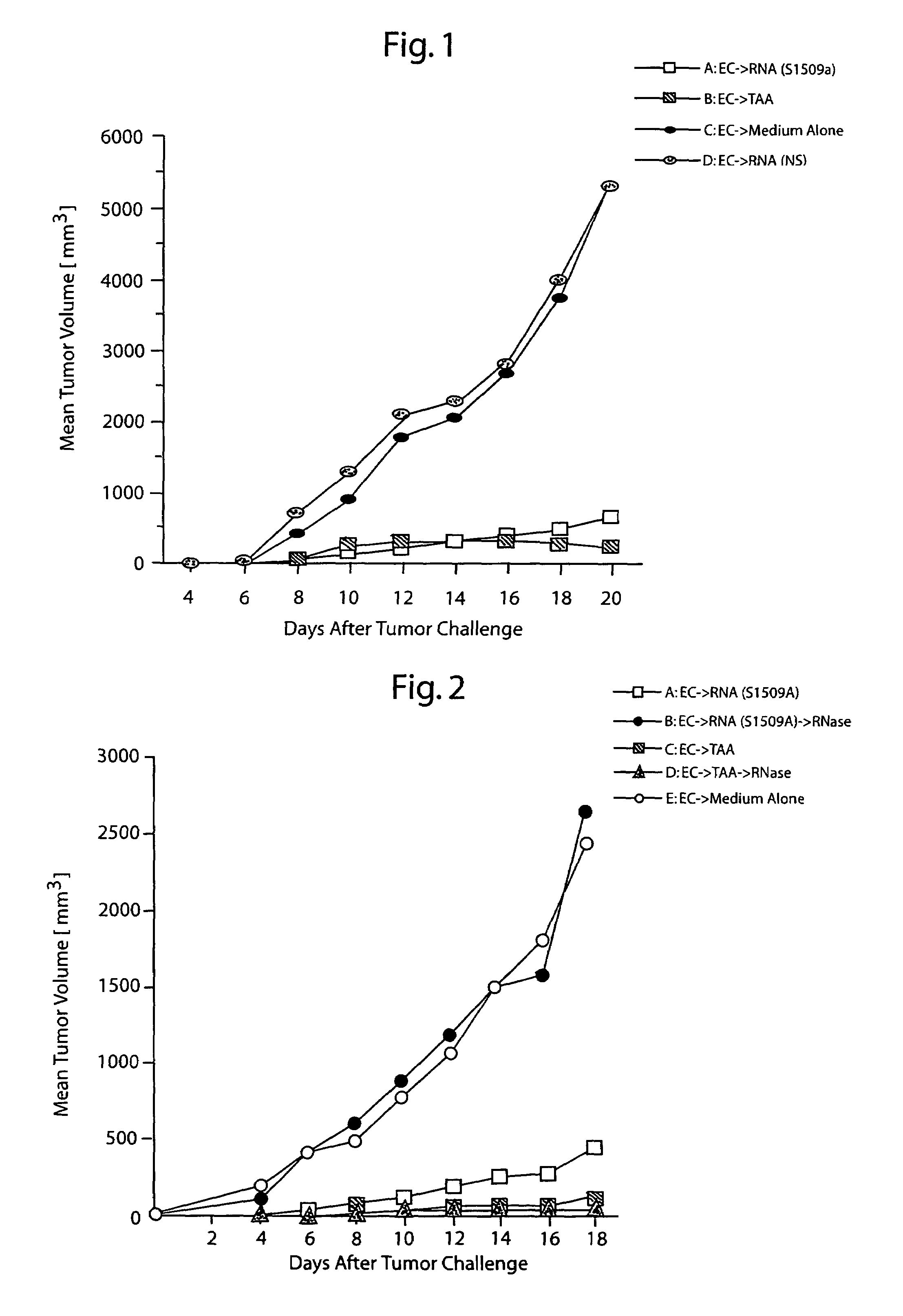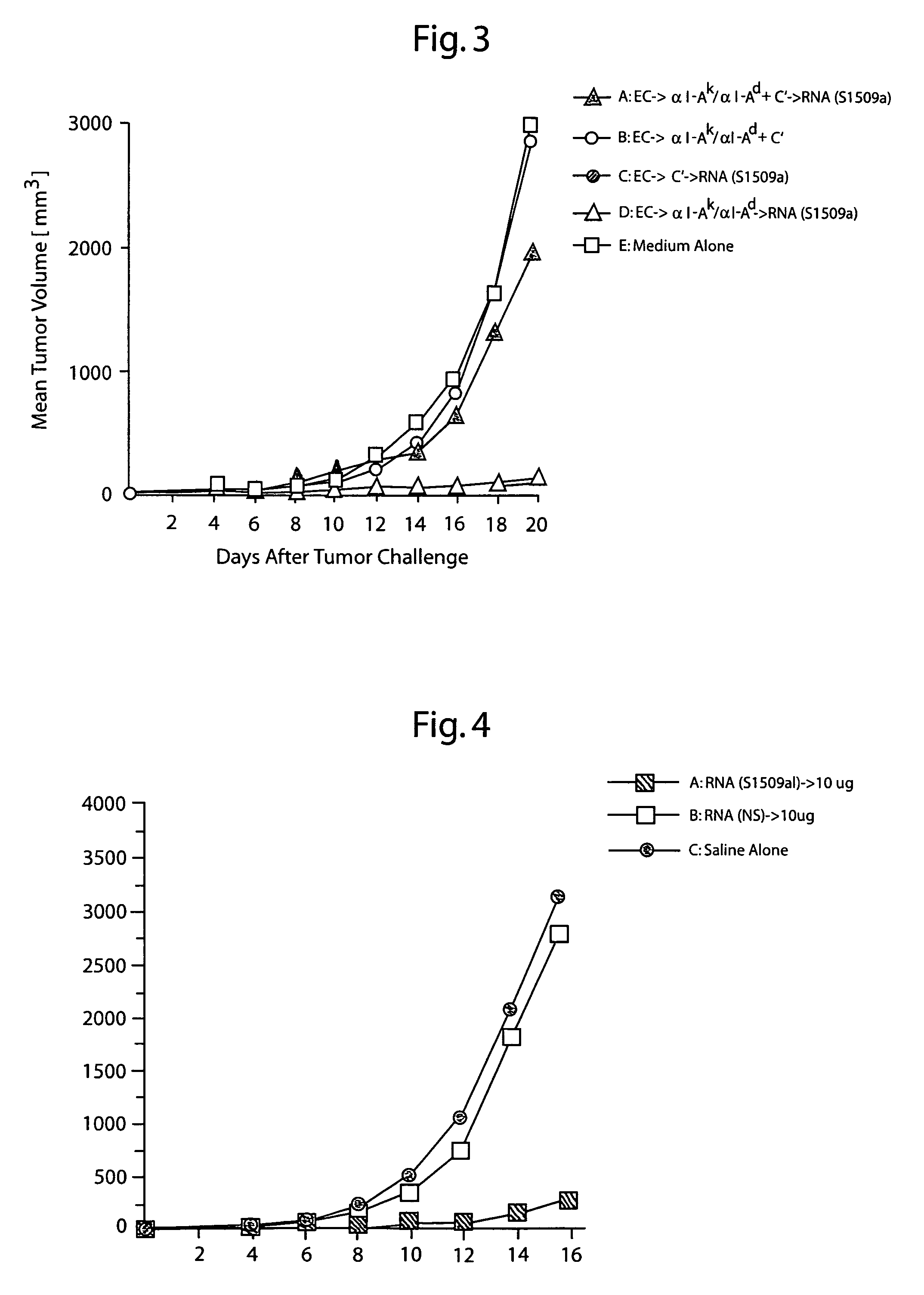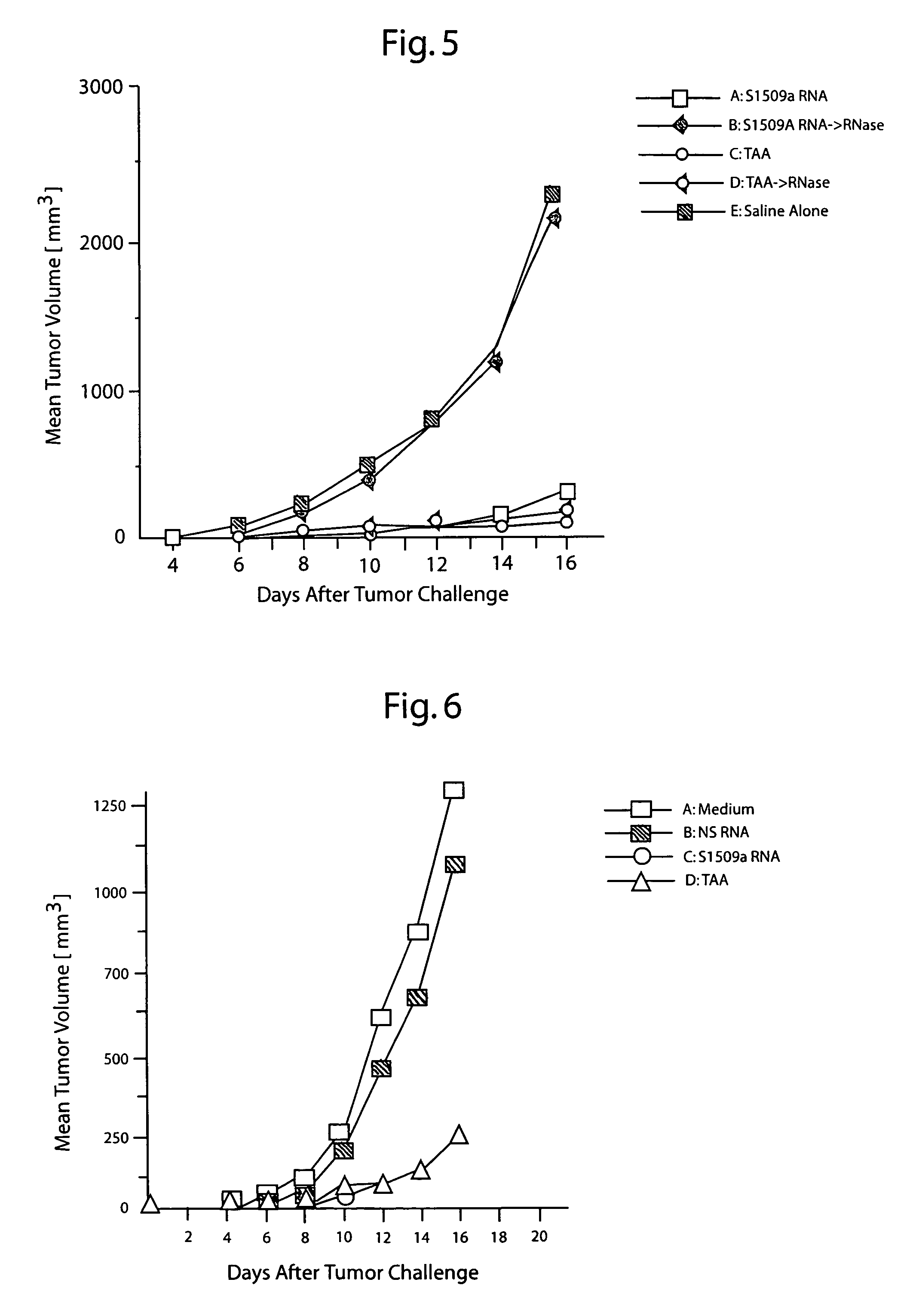Protective immunity or immunological tolerance induced with RNA particularly total cellular RNA
a technology of immunological tolerance and immunity, which is applied in the direction of biocide, genetic material ingredients, organic chemistry, etc., can solve the problems of genetic restriction of ec to induce immunity, increased risk of inducing autoimmune responses and diseases, and tumor-specific ability to induce immunity, etc., to reduce or inhibit tumor or microorganism growth
- Summary
- Abstract
- Description
- Claims
- Application Information
AI Technical Summary
Benefits of technology
Problems solved by technology
Method used
Image
Examples
example 1
Ex Vivo Immune Therapy in Cutaneous Cells
[0089]Mice. Six to 12-wk-old CAF, (H-2a) female mice were obtained from the Jackson Laboratories (Bar Harbor, Me.). Mice were housed in the animal facility of the Weill Medical College of Cornell University, New York, N.Y.
[0090]Tumor and cell line. The S1509a methylcholanthrene-induced fibrosarcoma cell line, originally derived from A / J mice, has been described (Fujimoto S. et al., Immunol Commun 1975, 4: 201). This cell line was maintained in tissue culture at 37° C. and 5% CO2 in RPMI 1640 supplemented with 10% heat-inactivated FCS (Gibco Laboratories, Grand Island, N.Y.), 100 U / ml penicillin, 100 (g / ml streptomycin, 0.1 mM essential and nonessential amino acids, 2 mM L-glutamine, 1 mM sodium pyruvate and 0.01 M HEPES buffer (“complete medium”). The NS cell line has also been described. It was propagated in complete medium.
[0091]Reagents. For selective cell deletion, the following monoclonal antibodies were used: Anti-Thy 1.2 (Sigma, St. Lo...
example 2
In Vivo Immunotherapy Provides Protection
[0104]Based on the results achieved in Example 1, direct cutaneous injection of total tumor RNA was attempted. Unless indicated otherwise, the procedures are as described in Example 1.
[0105]Immunization of mice by intradermal administration of RNA. To examine whether intradermal administration of total cellular RNA from the S1509a tumor could induce anti-tumor immunity, a group of naïve CAF1 mice was injected intradermally with RNA derived from the S1509a tumor. Groups of control animals were immunized with RNA derived from NS cells or with saline alone. Immunizations of 10 μg total RNA (from about 106 tumor cells) were performed a total of three times in two spots per mouse at weekly intervals, and one week after the last immunization all mice were challenged with 1×106 living S1509a cells s.c. Tumor growth was then scored over time. As shown by the data in FIG. 4, mice immunized with RNA derived from S1509a cells but not with RNA derived fr...
example 3
In Vivo Immunotherapy For Treatment
[0107]To determine whether direct cutaneous injection of total tumor RNA could inhibit or reduce growth of a tumor, groups of five mice were inoculated with living S1509a cells subcutaneously. Twenty-four hours later, the mice were immunized three times a week at twenty-four hour intervals with 10 μg of total cellular RNA from S1509a cells, total cellular RNA from the NS cell line, TAA, or medium alone. The immunization scheme was repeated every 48 hours for an additional three immunizations. Unless indicated otherwise, the procedures are as described in Example 1.
[0108]As shown in FIG. 6, tumor growth in the animals immunized with S1509a RNA and TAA was significantly inhibited compared to growth in animals immunized with NS cell RNA or medium alone. Thus, intradermal administration of tumor-derived RNA immunized against growth of the tumor from which the RNA was derived.
PUM
| Property | Measurement | Unit |
|---|---|---|
| concentration | aaaaa | aaaaa |
| concentration | aaaaa | aaaaa |
| time | aaaaa | aaaaa |
Abstract
Description
Claims
Application Information
 Login to View More
Login to View More - R&D
- Intellectual Property
- Life Sciences
- Materials
- Tech Scout
- Unparalleled Data Quality
- Higher Quality Content
- 60% Fewer Hallucinations
Browse by: Latest US Patents, China's latest patents, Technical Efficacy Thesaurus, Application Domain, Technology Topic, Popular Technical Reports.
© 2025 PatSnap. All rights reserved.Legal|Privacy policy|Modern Slavery Act Transparency Statement|Sitemap|About US| Contact US: help@patsnap.com



